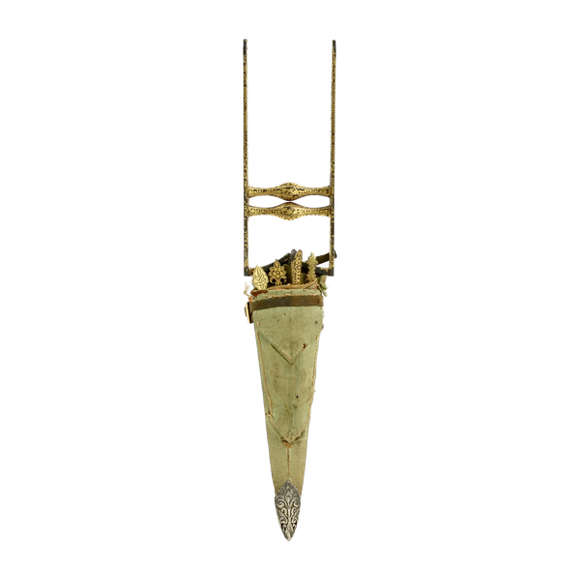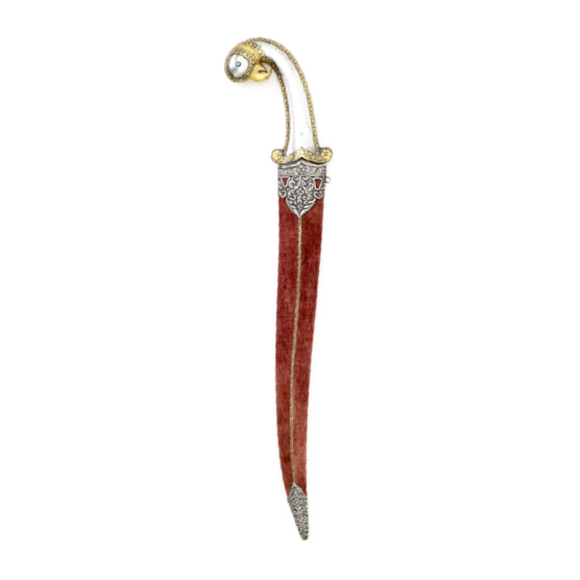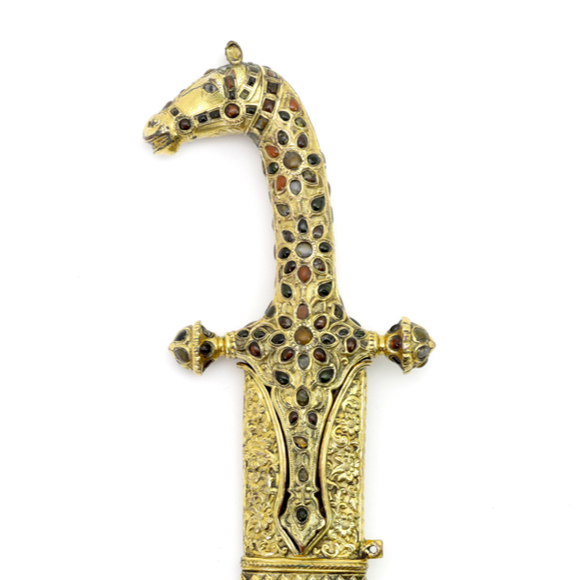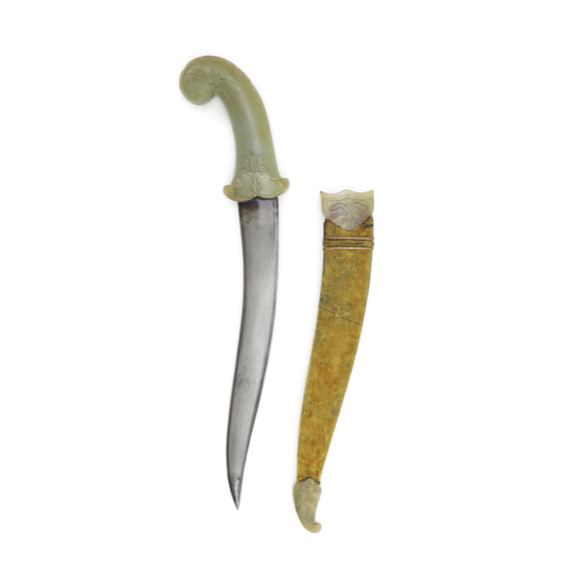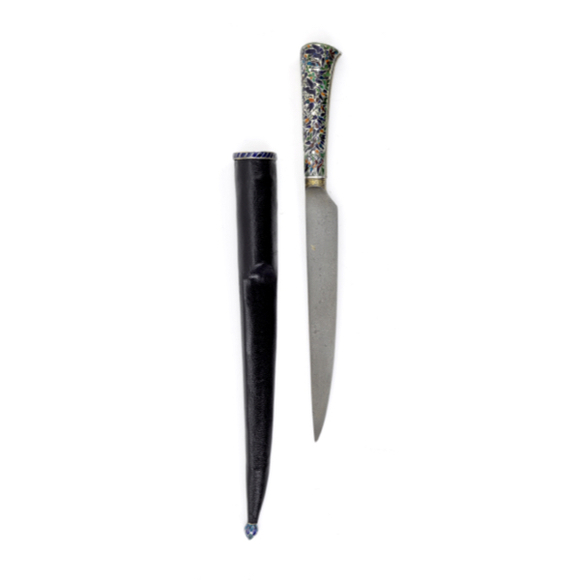With a fine wootz blade with a pronounced center ridge.

57 cm
43.2 cm
t-section 12.5 mm
blade itself 4 mm
515 grams
North India
Steel, silver, brass.
Probably 19th century
Introduction
Karud is a name often used by collectors to describe a straight pesh-kabz. However, it is probably based on a misunderstanding. The pronunciation of karud is very close to kard (کارد) which simply means dagger, and it was not uncommon in the Persian spoken language to add vowels for clarity while the writing only has letters for consonants, so the error was easily made.
Description
An unusually large version with an all-metal handle. The blade with a pronounced T-shaped spine section narrows gradually to an acute point. The pronounced T-construction is a clever design that accomplishes superb stiffness while keeping the edge thin for effective cutting.
The base of the blade is decorated with silver damascening or "koftgari" of floral designs. The all-metal handle is soldered with brass at the back. It is engraved with vegetal motifs and flowers. A screw at the pommel allows the back to come off, exposing the hollow inside of the hilt that was used to contain a whitish powder.

The spine of the blade bears an inscription in Devanagari script referring to a certain ruler, Raj Rajeshwar, and the year 108, and that the blade is made of "sukhela steel".
Raj Rajeshwar doesn't ring a bell and the year 108 is also mysterious. The Vikram Samvat calendar is just a few decades ahead of the Gregorian calendar, not many centuries behind, and the style of the knife is certainly that of the 19th century.
Sukhela is a type of mechanical “damascus” steel, made by forge folding layers of iron and steel with different compositions together to make a hard and tough blade. It's currently unpolished, but if it is sukhela steel, a polish should reveal such layering in the steel.
Condition
The piece is in very good condition. Some minor signs of sharpening over the course of its life. Some minor wear to the silver decor, probably from sliding in and out of its scabbard. (Now lost.) Decor on the handle in good shape, with no losses. The steel blade shows the usual darkening that can be expected on a blade of this age. No edge damage, no nicks, cracks or pits in the blade.
Conclusion
A large all-steel Indian dagger, of shortsword size. It has an interesting inscription that makes a nice puzzle for the future owner that cares enough to investigate.
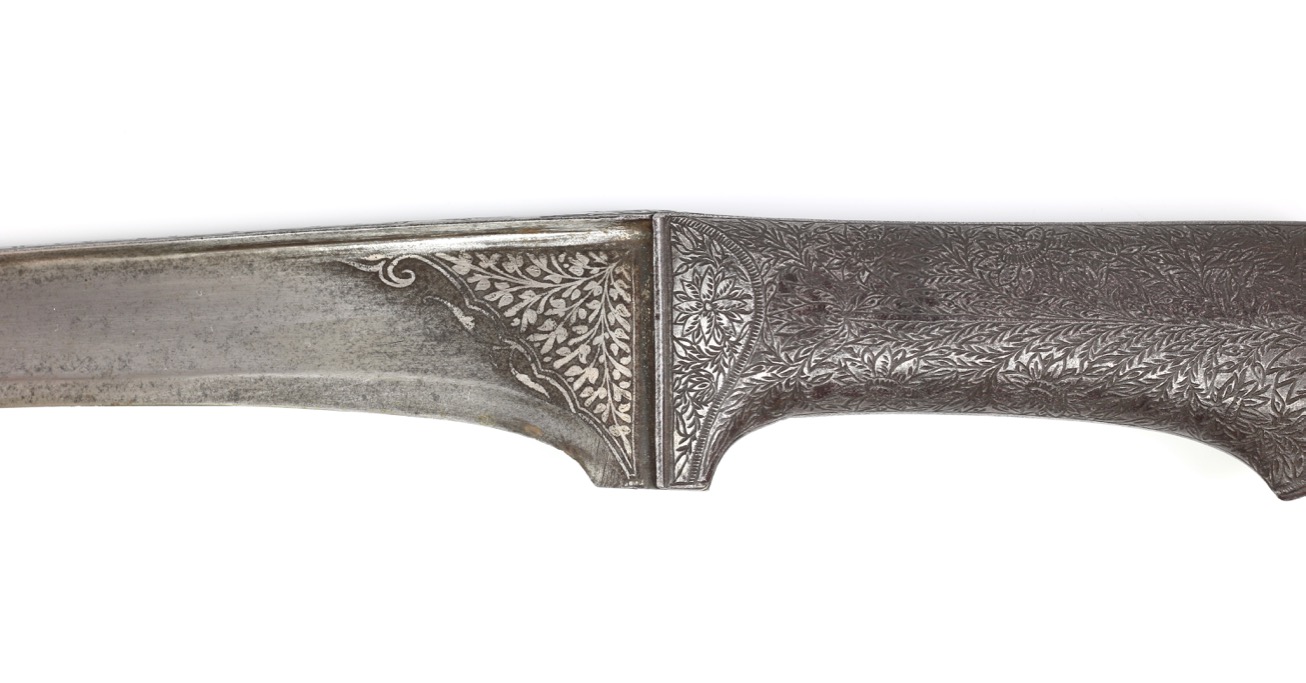
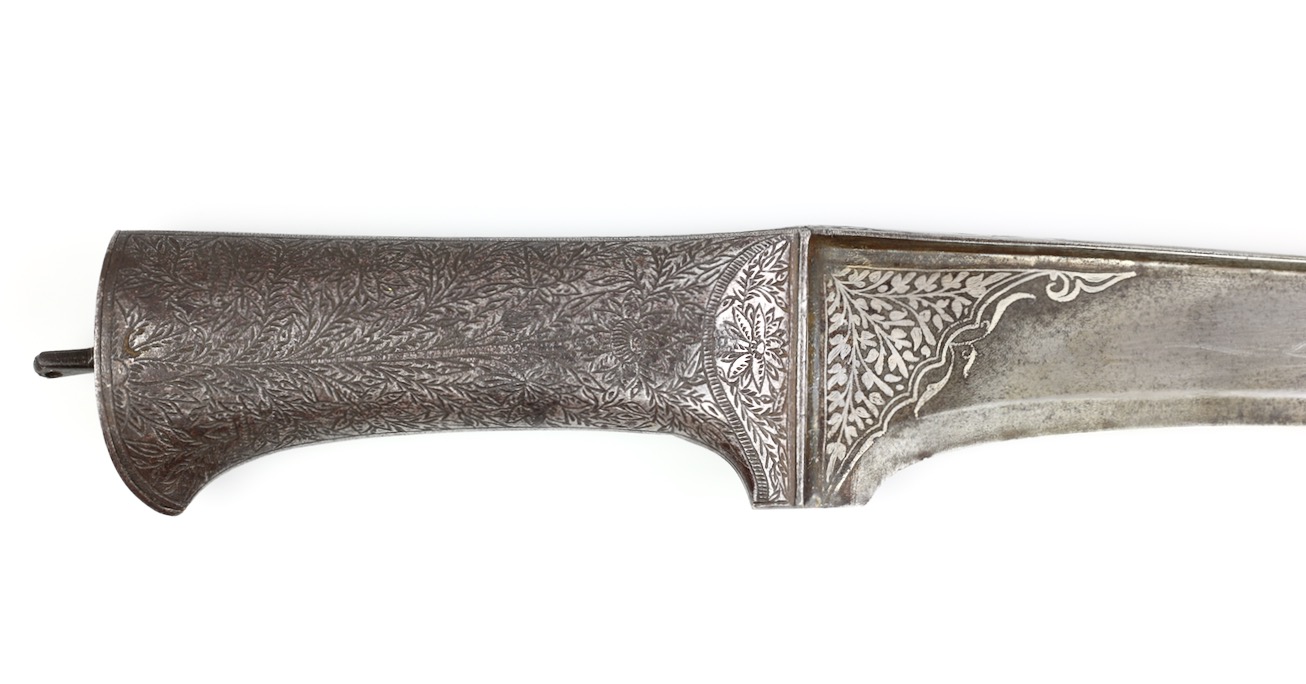
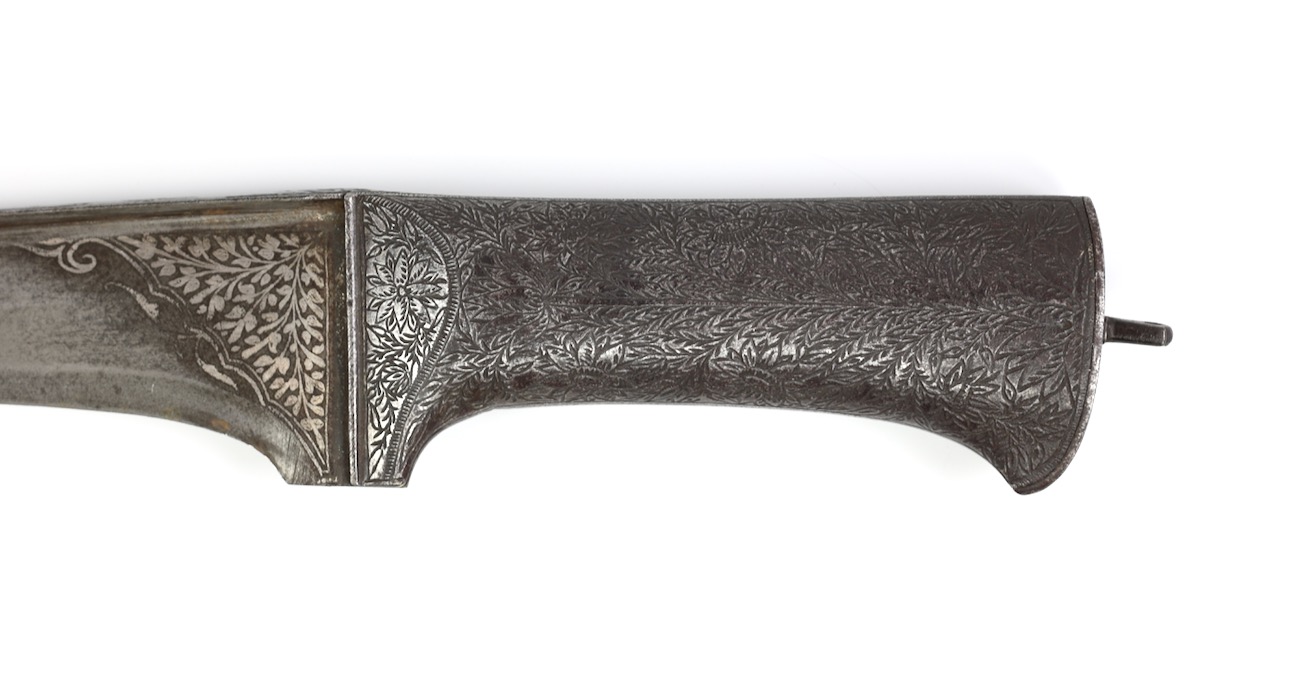
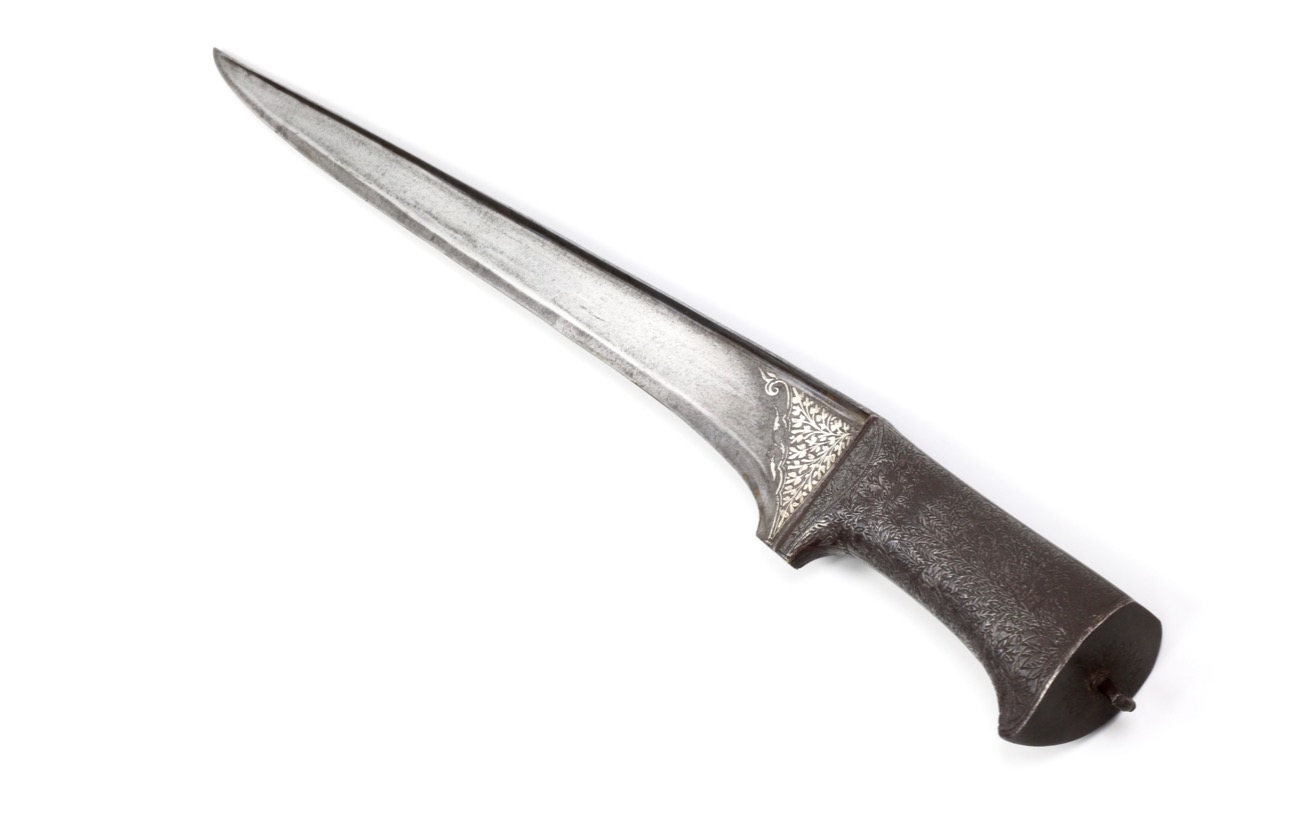
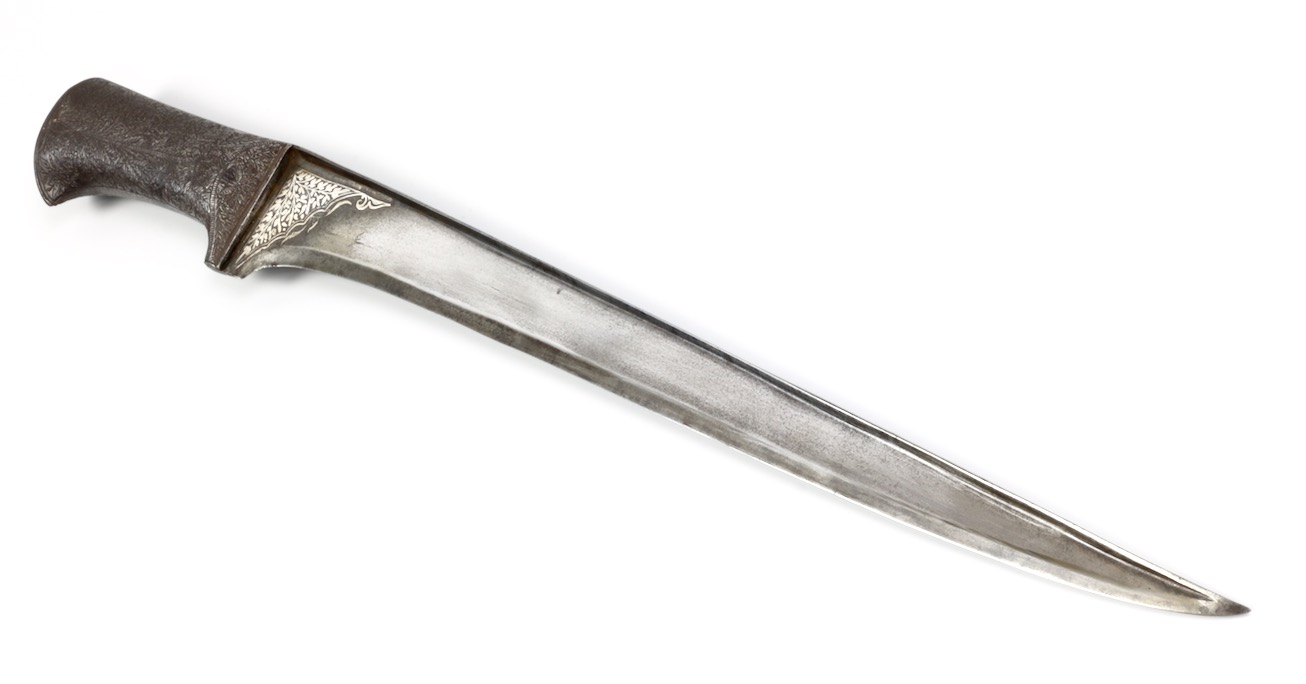
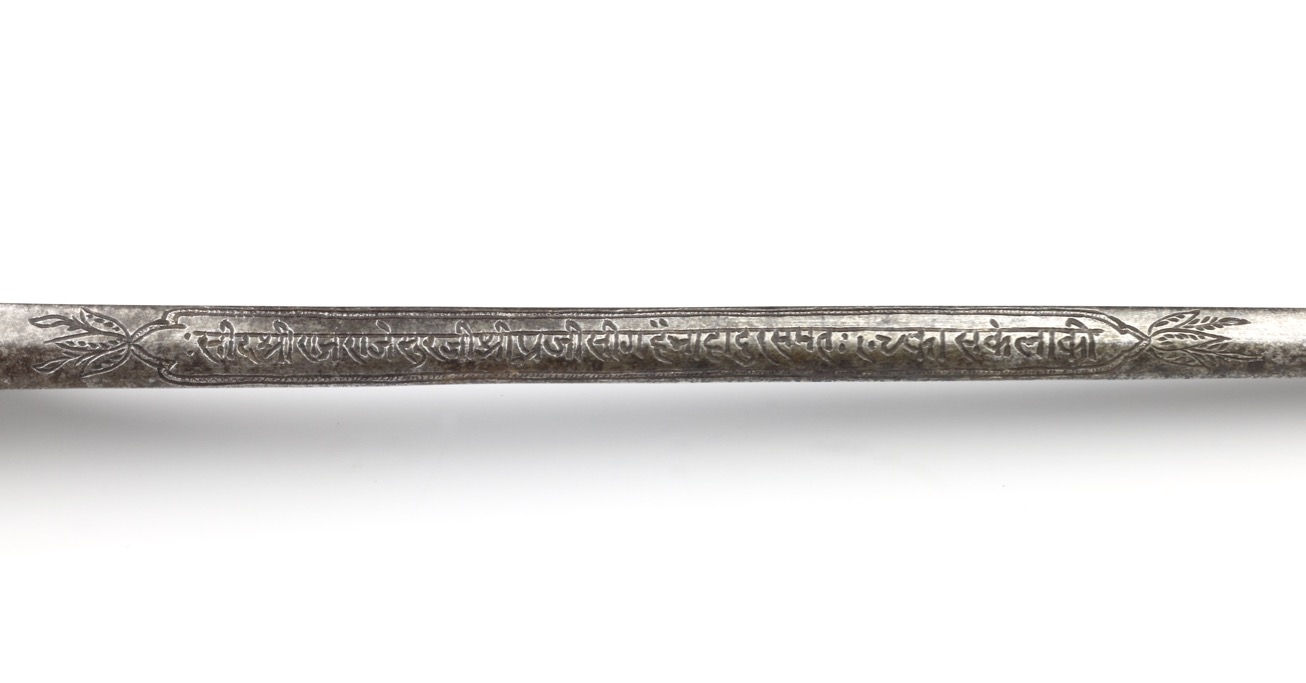
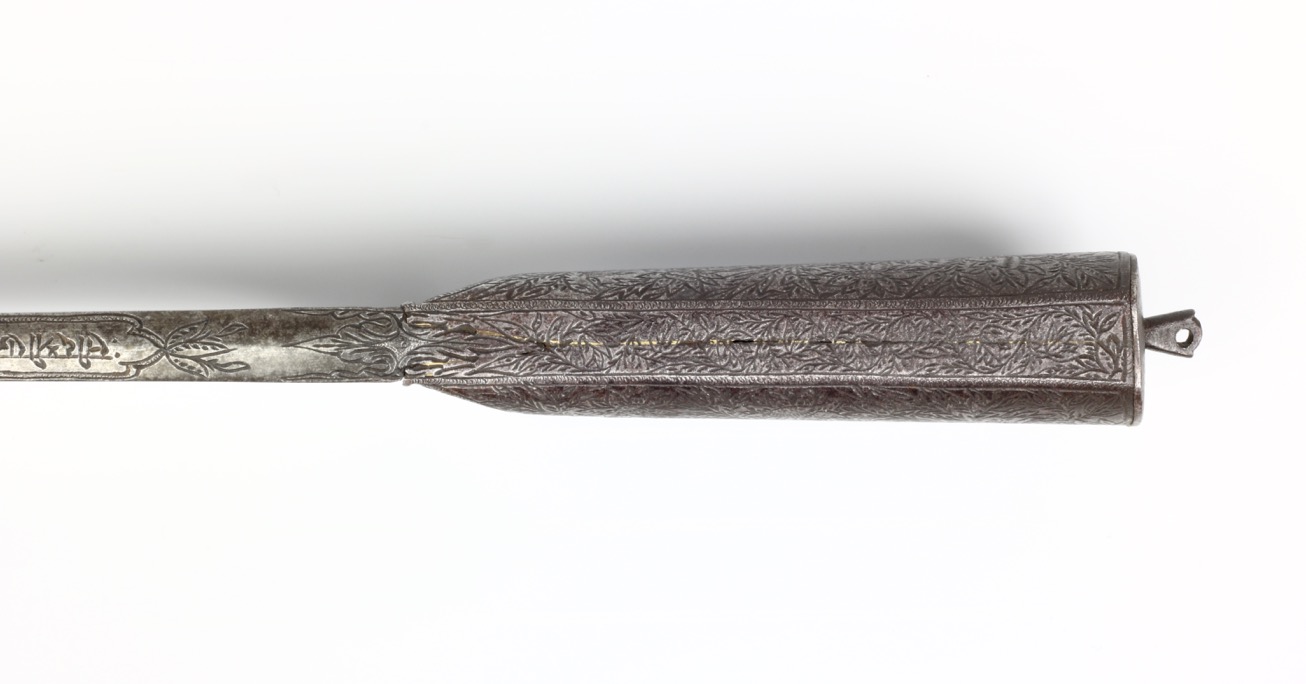
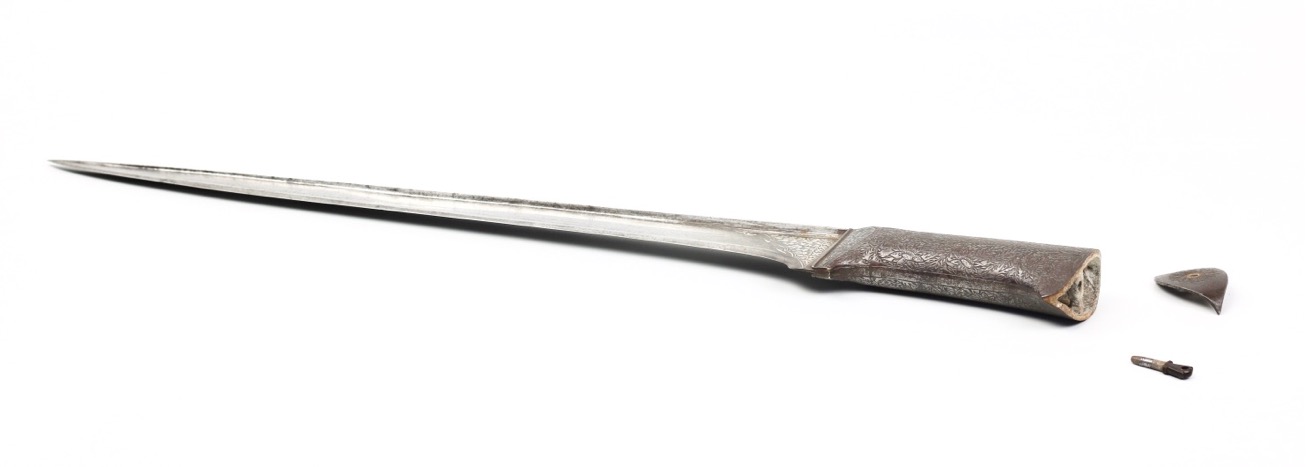
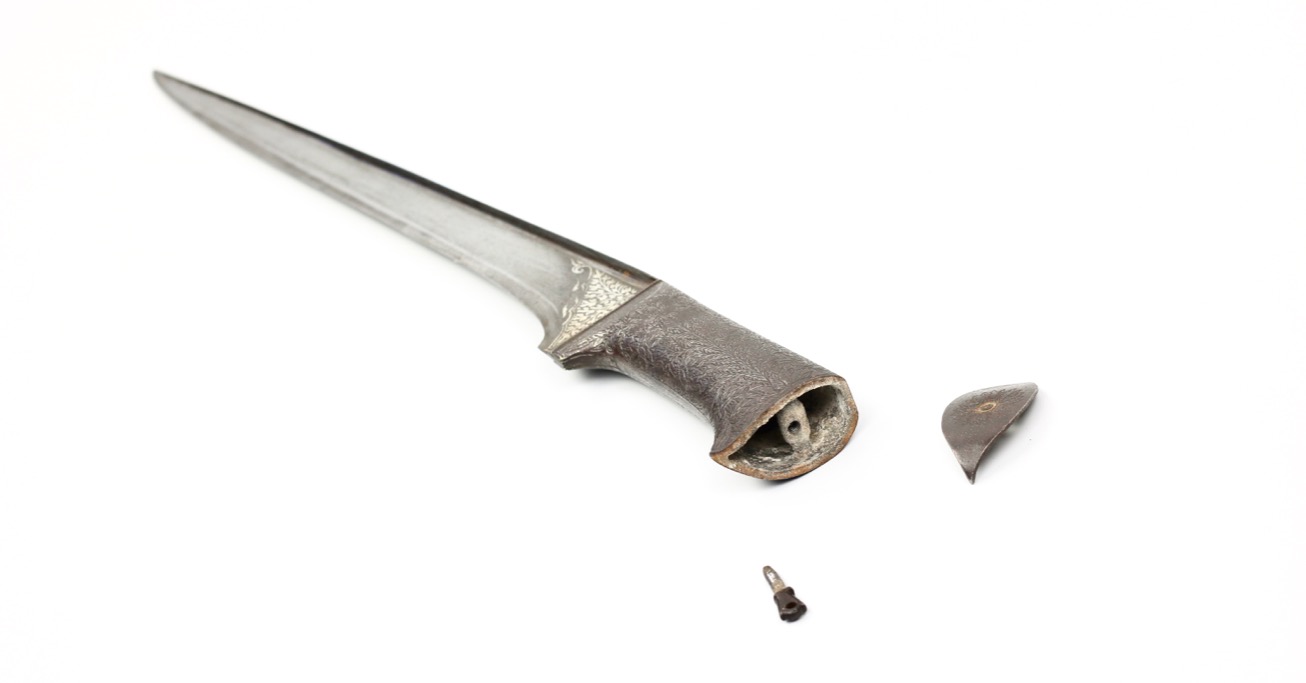
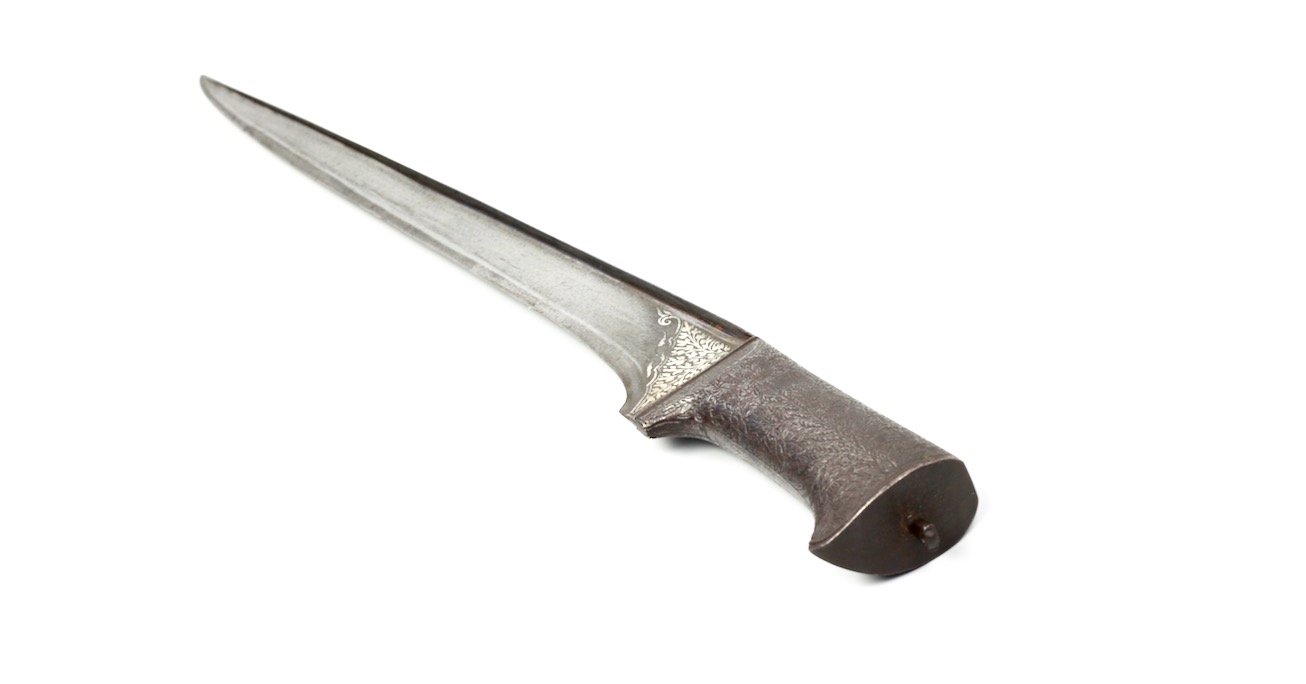
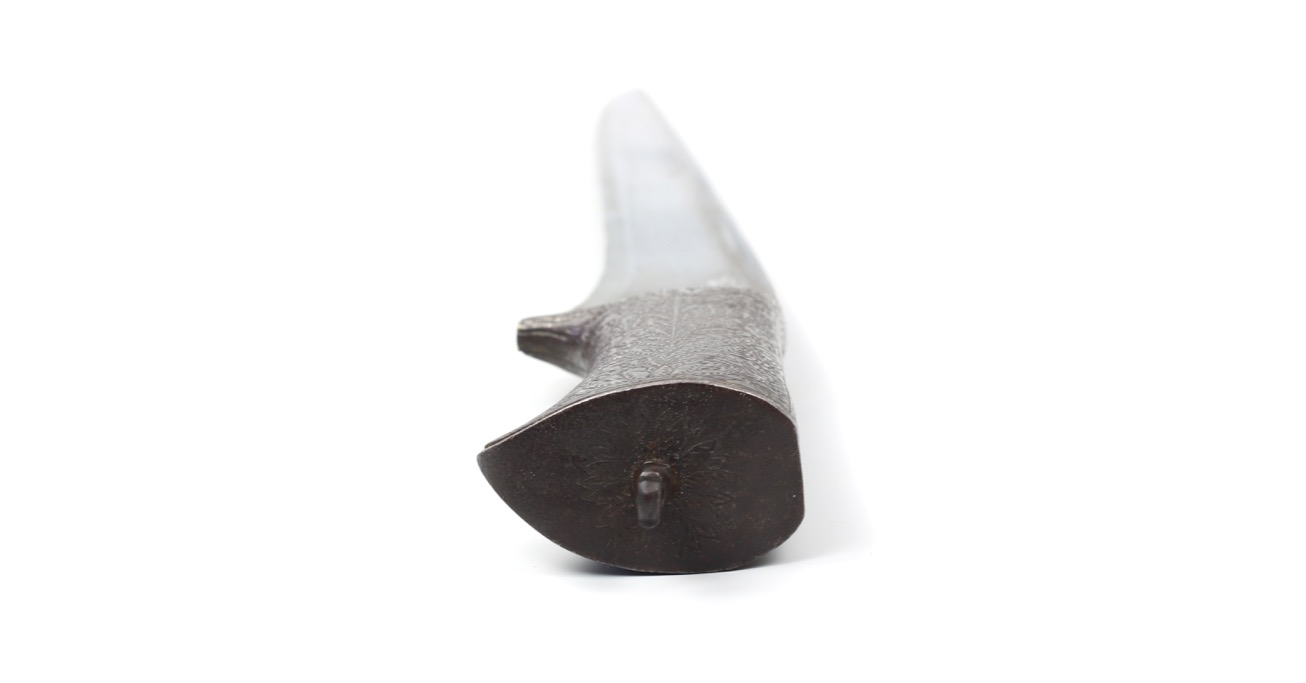
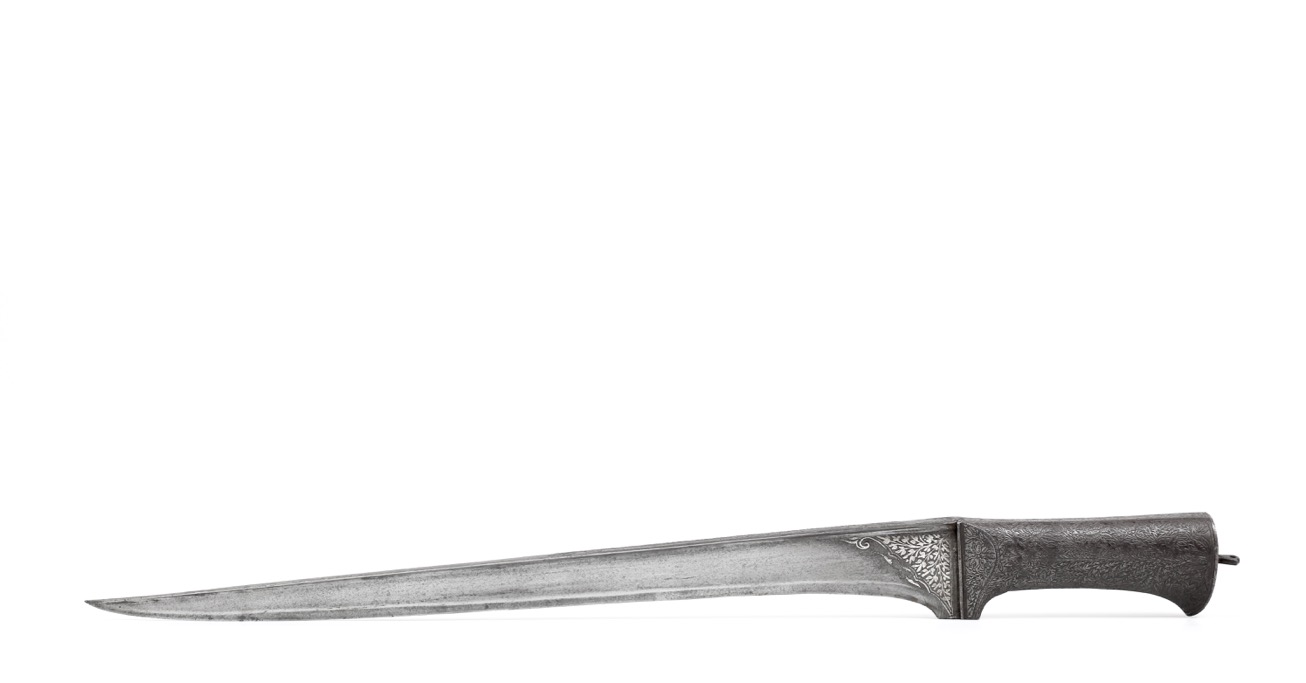
The style typical of Kutch, the execution far above what is normally seen on work from that area.
Nice and complete with opaque green hilt and scabbard mounts.
With designs of animals, often attributed to Lucknow, north India.

